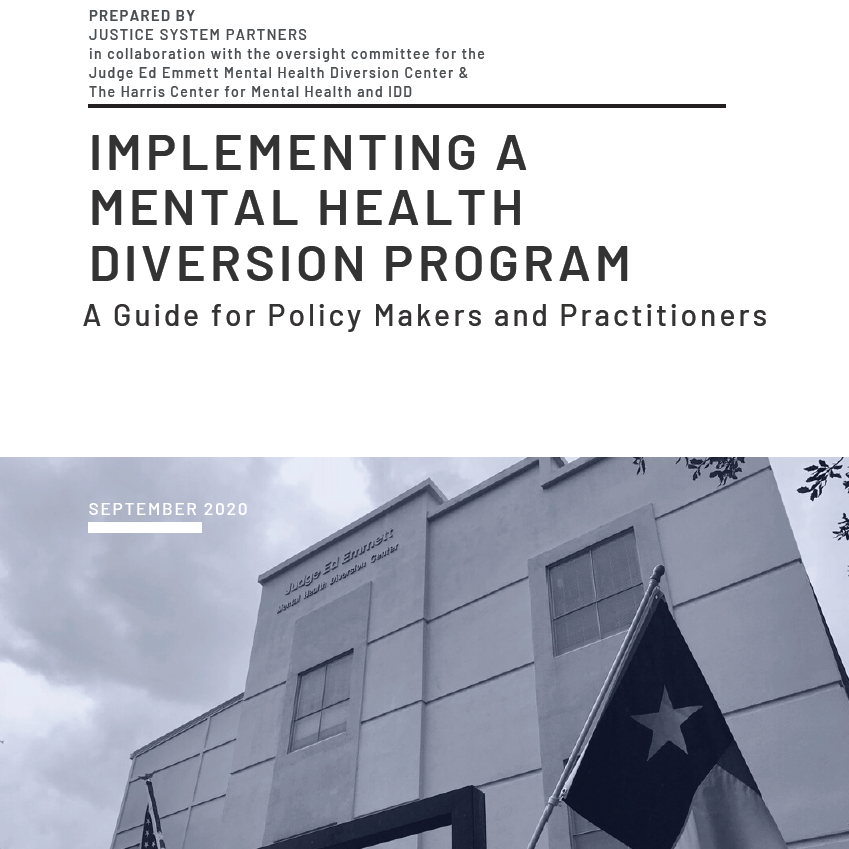Implementing a Mental Health Diversion* Program: a Guide for Policy Makers and Practitioners
JSP Staff
This guide was developed to serve as a road map for change leaders and decision makers looking to create diversion opportunities for people with low-level misdemeanors and mental illness. It outlines a four-phase process for implementing and monitoring an evidence-based program, and provides useful tools for organizing and planning an initiative. The guide draws from implementation science and lessons learned from Harris County, Texas, where many of these concepts were tested on the ground. Additional perspectives from the stakeholders involved in implementing Harris County’s Diversion Center provide practical insight on the process outlined.
Throughout the manual, you will find details about Harris County’s Judge Ed Emmett Mental Health Diversion Center in boxes formatted like this. Look to Harris County as an example of an implementation effort on the ground. Lessons gleaned from the successes of key collaborators in Harris County, as well as the challenges, will provide your jurisdiction with practical insight as you begin to think about implementing a mental health diversion center in your community.
*Note that the term deflection is used here in keeping with the title of Harris County’s program and center, while technically this is a deflection program. For further explanation of the distinction between and application of these terms, see our resource Differentiating Deflection from Diversion.

